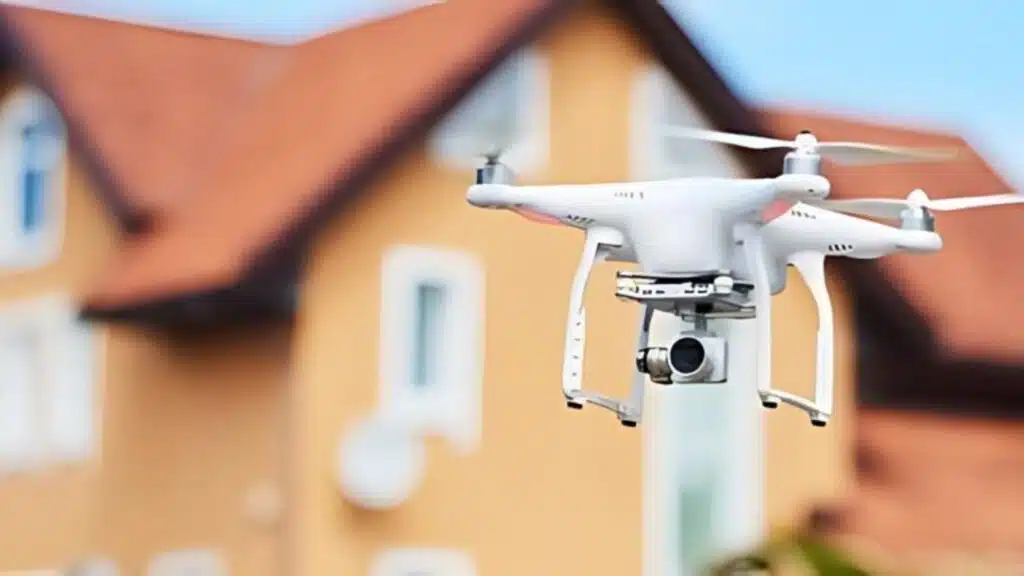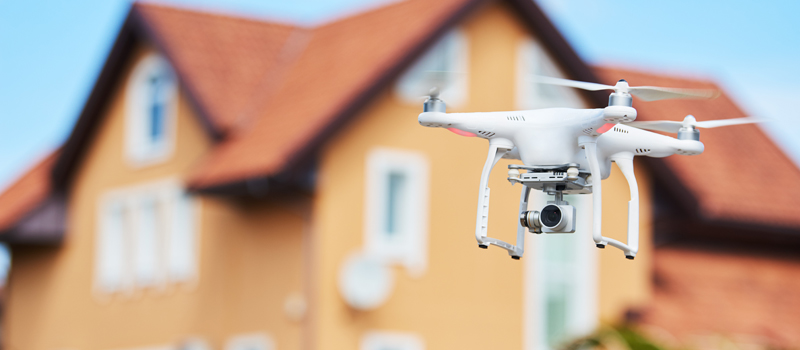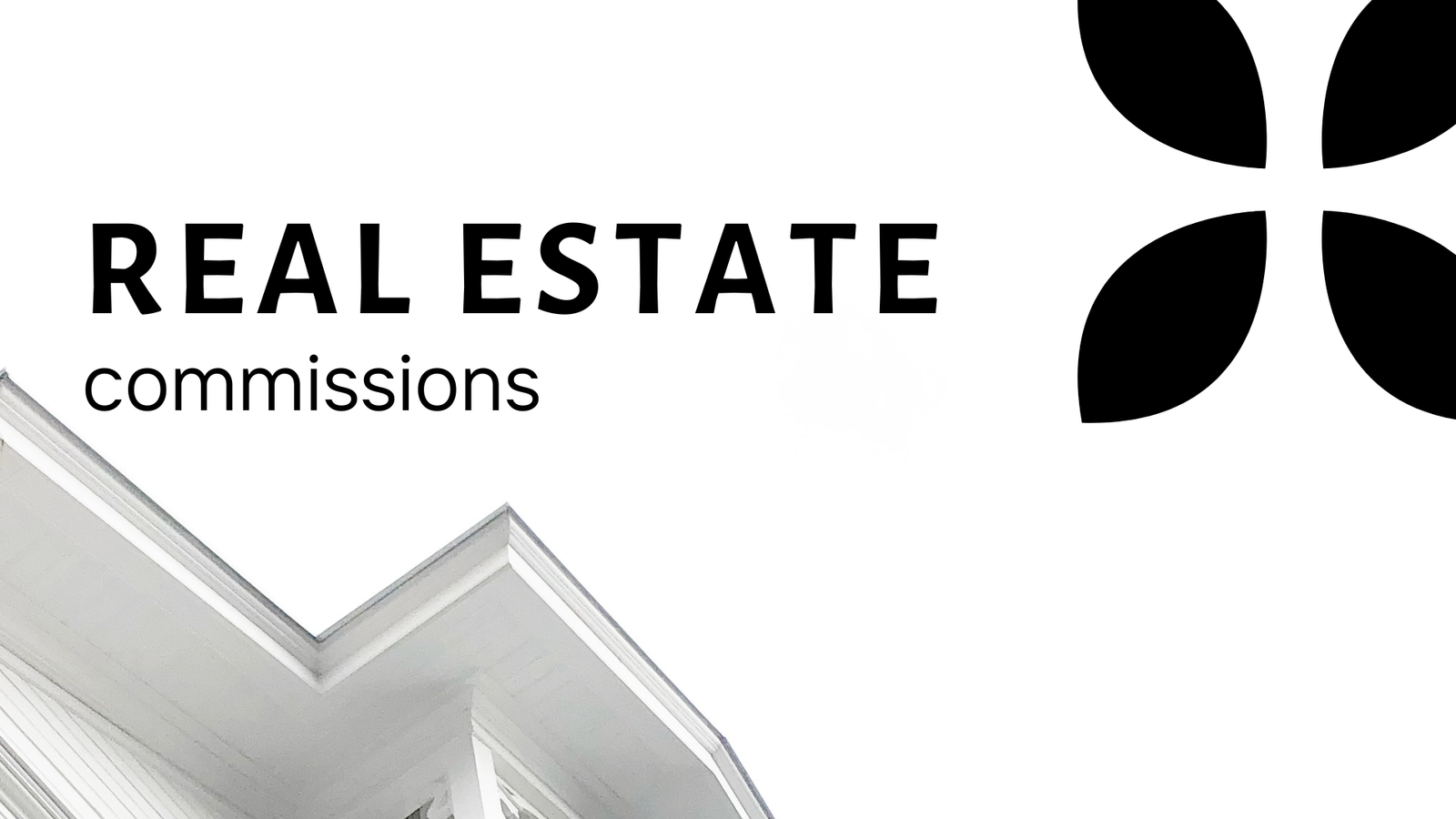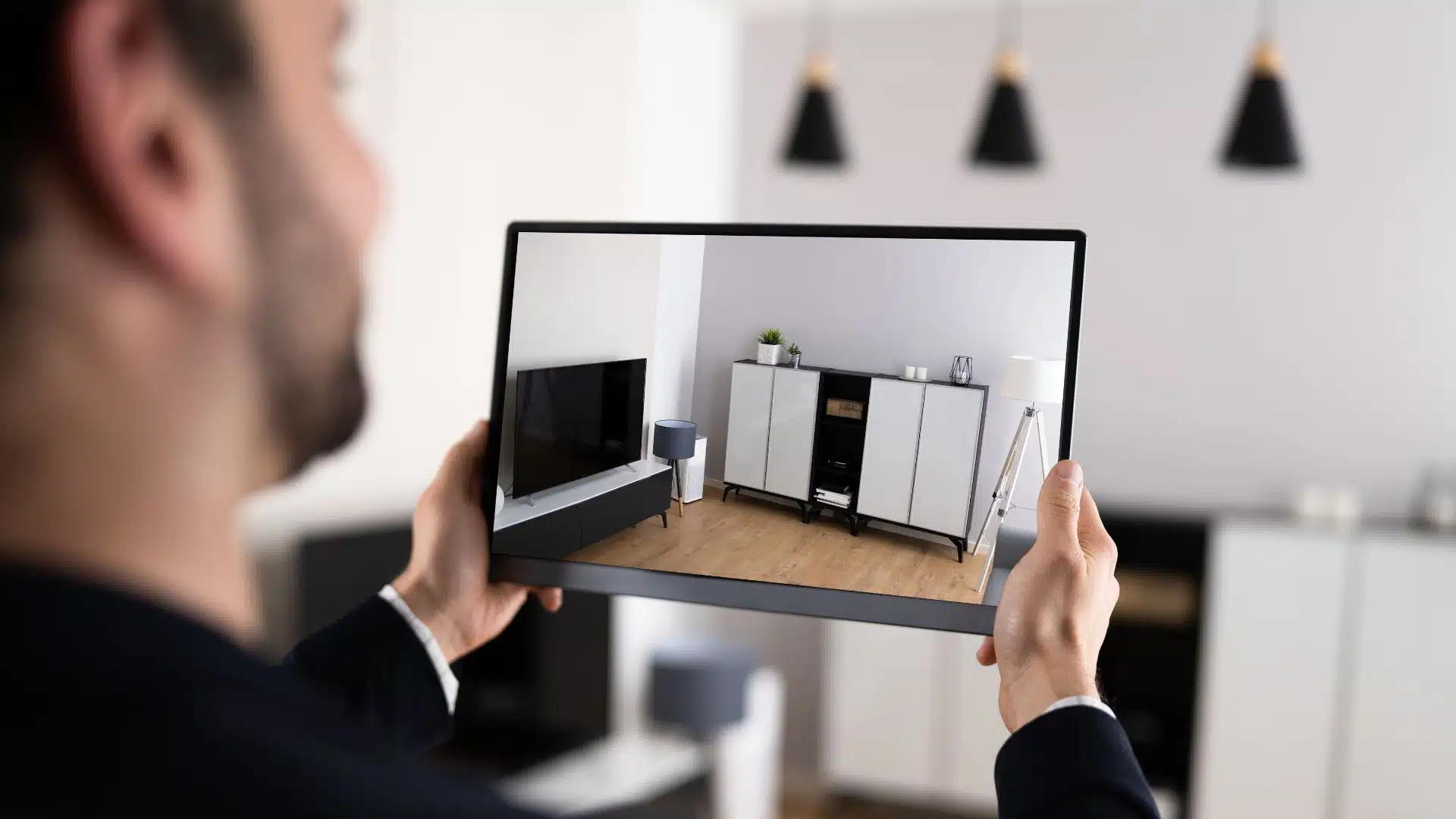Ensure proper lighting and weather conditions for clear shots. Use high-quality drones for professional, sharp images.

Drone real estate photography tips can significantly enhance property listings. Capturing aerial shots offers unique perspectives that highlight a property’s features and surroundings. It is essential to plan your shoots meticulously, considering the best time of day and optimal weather conditions to achieve crisp, vibrant images.
Utilizing high-quality drones equipped with advanced cameras ensures superior image resolution. Comply with local regulations to avoid legal issues and ensure safety. These practices will help create stunning visuals that attract potential buyers and set your listings apart.

Credit: www.vaned.com
Choosing The Right Drone
Choosing the right drone is crucial for stunning real estate photography. The right drone provides high-quality images and stable flight control. Here are essential factors to consider when selecting a drone for real estate photography:
Camera Quality
The camera quality of your drone is paramount. Look for a drone with a high-resolution camera. A camera with at least 12 megapixels is ideal. Ensure the drone has a 4K video capability. This ensures crisp, clear images and videos of properties.
Check for adjustable camera settings. Settings like ISO, shutter speed, and white balance can improve your shots. A drone with a gimbal stabilizer helps eliminate shaky footage. This feature is crucial for professional-looking images.
Stability And Control
Stability and control are vital for capturing sharp images. Choose a drone with GPS and altitude hold features. These features help maintain a steady position, even in windy conditions. Drones with obstacle avoidance technology are also beneficial. They help prevent crashes and ensure smooth flights.
Consider the drone’s flight time and range. Longer flight times mean more shots in one go. A range of at least 1 mile is recommended for covering large properties. Ensure the drone has intuitive controls. Easy-to-use controls make it easier to focus on capturing the perfect shot.
| Feature | Description |
|---|---|
| Camera Quality | High resolution, 4K video, adjustable settings |
| Stability | GPS, altitude hold, obstacle avoidance |
| Control | Intuitive controls, long flight time, wide range |
Choosing the right drone involves focusing on camera quality, stability, and control. By considering these factors, you can ensure your real estate photos stand out.
Understanding Local Regulations
Drone real estate photography offers unique perspectives and stunning visuals. But before taking flight, understanding local regulations is crucial. This ensures safety, compliance, and high-quality results. Let’s dive into some important aspects.
Flight Restrictions
Drones can’t fly everywhere. Certain areas have flight restrictions. These include:
- Near airports
- Over crowds
- National parks
Always check a no-fly zone map before flying. This helps avoid fines and ensures safety. Many apps provide updated information on restricted areas.
Permits And Licenses
Some areas require permits for drone use. It’s essential to know if your area does. Here’s a simple guide:
| Region | Permit Required |
|---|---|
| City Parks | Yes |
| Private Property | No, with owner’s permission |
| Public Beaches | Yes |
Licenses are another key aspect. The FAA Part 107 license is necessary for commercial drone use in the U.S. This includes real estate photography. The process involves:
- Passing a knowledge test
- Registering your drone
- Following FAA guidelines
Always carry your license during shoots. This helps avoid legal issues and ensures professionalism.
Planning Your Shoot
Effective drone real estate photography begins with meticulous planning. Thoughtful preparation ensures stunning and marketable images. This section delves into key considerations for planning your drone shoot.
Drone Real Estate Photography Tips: Scouting Locations
Finding the perfect location is crucial. Scout the property beforehand to identify the best angles and features. Look for:
- Unique architectural details
- Beautiful landscaping
- Nearby amenities
Use Google Maps or similar tools to get a bird’s-eye view. Walk around the property to spot potential obstacles like trees or power lines. Take notes and mark the best spots for drone take-off and landing.
Weather Considerations
Weather plays a significant role in drone photography. Check the forecast for:
- Clear skies
- Low wind speeds
- Optimal lighting conditions
Morning or late afternoon light often offers the best results. Avoid shooting during midday when the sun is directly overhead. Windy conditions can make flying difficult and affect image stability. Use weather apps to get real-time updates and plan your shoot accordingly.
| Weather Factor | Ideal Condition |
|---|---|
| Sky | Clear or partly cloudy |
| Wind Speed | Less than 10 mph |
| Lighting | Golden hours (early morning, late afternoon) |

Credit: pilotinstitute.com
Mastering Drone Controls
Mastering drone controls is essential for capturing stunning real estate images. A steady hand and precise movements can make all the difference. Here, we’ll dive into basic maneuvers and advanced techniques to help you elevate your drone photography skills.
Basic Maneuvers
Before diving into complex shots, get comfortable with basic manoeuvres. Practice these moves to build your foundation.
- Takeoff and Landing: Start by mastering smooth takeoffs and landings. Ensure the drone ascends and descends steadily.
- Hovering: Keep the drone steady in one spot. This is crucial for clear, sharp images.
- Directional Control: Practice moving the drone forward, backwards, left, and right. Get used to changing directions smoothly.
- Altitude Adjustment: Learn to control the drone’s height precisely. This helps in capturing different perspectives.
Advanced Techniques
Once you’re comfortable with the basics, try these advanced techniques to capture professional-quality shots.
- Orbiting: Circle around a point of interest, keeping it in the center of the frame.
- Tracking Shots: Follow a moving subject smoothly. This adds dynamic motion to your shots.
- Waypoints: Pre-program the drone to fly a specific path. This ensures consistent shots every time.
- Panorama Shots: Rotate the drone slowly to capture wide-angle views. Stitch these images together in post-processing.
Here’s a quick comparison of basic and advanced maneuvers:
| Maneuver Type | Description |
|---|---|
| Takeoff and Landing | Basic – Smooth ascents and descents. |
| Hovering | Basic – Keeping the drone steady in one spot. |
| Orbiting | Advanced – Circling around a point of interest. |
| Tracking Shots | Advanced – Following a moving subject. |
Framing And Composition
Framing and composition are crucial in drone real estate photography. They can transform a simple shot into a stunning image. Understanding the right angles, perspectives, and key features helps in creating captivating visuals. These elements ensure the property stands out in listings.
Angles And Perspectives
Different angles and perspectives add depth to your photos. Try shooting from various heights to capture unique views. A high-angle shot gives a bird’s eye view, ideal for showcasing the entire property. Low-angle shots can highlight architectural details and landscaping.
Experiment with diagonal angles to add dynamism to your images. Diagonal lines create a sense of movement, making the photo more engaging. Use parallel lines to guide the viewer’s eye towards the property. This technique draws attention to important features.
Drone Real Estate Photography Tips: Highlighting Key Features
Focus on highlighting key features of the property. Identify the most attractive elements, such as swimming pools, gardens, or unique architecture. Ensure these features are prominent in your photos.
Use the rule of thirds to position key features. Divide the frame into nine equal parts. Place important elements along these lines or at their intersections. This creates a balanced composition and makes the image visually appealing.
Consider the property’s surroundings. Highlight nearby amenities like parks or lakes. This adds value to the listing and attracts potential buyers.
| Angle | Perspective | Effect |
|---|---|---|
| High-angle | Bird’s eye view | Showcases entire property |
| Low-angle | Ground view | Highlights details |
| Diagonal | Dynamic view | Adds movement |
- Capture from different heights
- Use diagonal lines for movement
- Highlight unique architecture

Credit: www.styldod.com
Lighting Techniques
Lighting is key in drone real estate photography. It enhances property features and provides a professional look. Understanding how to use light can make or break your photos.
Golden Hour Benefits
The golden hour is the first hour after sunrise and the last hour before sunset. During this time, the light is soft and warm. This natural light brings out the best in your photos.
- Soft light reduces harsh shadows.
- Warm tones create a welcoming feel.
- Low sun angle adds depth and dimension.
Plan your shoots during these times. It ensures the best lighting conditions for your drone photos. Set your alarms for early morning or late afternoon sessions.
Drone real estate photography tips: Managing Shadows
Shadows can add drama or ruin a shot. It’s important to manage them well. Here are some tips:
- Avoid midday sun. It creates harsh shadows.
- Use the golden hour for softer shadows.
- Adjust drone altitude. It affects shadow length.
- Use HDR mode to balance light and shadow.
Monitoring shadows helps you create balanced and attractive images. Always check your shots and adjust accordingly.
Post-processing Tips
Post-processing is key in drone real estate photography tips. It transforms raw images into stunning visuals. Let’s dive into some essential tips for post-processing.
Drone real estate photography tips: diting Software
The Right Editing Software for Drone Real Estate Photography Tips. Choosing the right editing software is crucial. Here are some popular options:
- Adobe Lightroom – Known for its robust features and user-friendly interface.
- Adobe Photoshop – Offers advanced editing tools for precise adjustments.
- Skylum Luminar – Great for quick edits with AI enhancements.
- Capture One – Preferred by professionals for its color grading tools.
Each software has unique strengths. Choose one that fits your workflow.
Drone real estate photography tips: Enhancing Colors
The drone real estate photography tips on enhancing color. Enhancing colors can make your drone photos pop. Follow these tips:
- Adjust White Balance: Ensure colors look natural and true to life.
- Increase Saturation: Make colors more vibrant, but avoid overdoing it.
- Use Graduated Filters: Enhance the sky and foreground separately.
- Boost Contrast: Adds depth and dimension to your images.
- Apply Vignettes: Draws attention to the center of the image.
Small changes can make a big difference. Experiment to find the best settings.
| Editing Tool | Purpose |
|---|---|
| White Balance | Corrects color tones |
| Saturation | Enhances color vibrancy |
| Graduated Filters | Balances exposure |
| Contrast | Adds depth |
| Vignettes | Focuses viewer’s attention |
Use these tools wisely. The goal is to enhance, not over-edit.
Showcasing Your Work
Once you’ve captured stunning drone shots, showcasing them is crucial. Proper presentation can attract potential clients. It highlights your skills and professionalism.
Creating Virtual Tours
Virtual tours offer an immersive experience. They allow potential buyers to explore properties remotely.
- Use high-resolution images for clarity.
- Ensure smooth transitions between scenes.
- Add informative labels to key features.
- Optimize the tour for mobile devices.
Virtual tours can be interactive. Include hotspots to give detailed information about specific areas. For example, click on a kitchen to see appliance details. This interactive approach can engage viewers better.
Marketing Strategies
Effective marketing boosts visibility. Here’s how to market your drone photography services:
- Social Media: Share your work on platforms like Instagram, Facebook, and LinkedIn. Use relevant hashtags to reach a broader audience.
- Website Portfolio: Create a dedicated section on your website. Highlight your best drone shots and virtual tours.
- Email Campaigns: Send newsletters to your client list. Include links to your latest projects and virtual tours.
- Collaborate with Real Estate Agents: Offer your services to real estate agents. They often need high-quality drone photography.
Using these strategies can enhance your online presence. It attracts more potential clients and showcases your expertise effectively.
Conclusion
Mastering drone real estate photography can elevate your listings. Use these tips to capture stunning aerial shots. Remember to prioritize lighting, angles, and safety. Practice regularly and stay updated with drone technology trends. With these strategies, your real estate photos will stand out, attracting more potential buyers and clients.
Happy flying!






